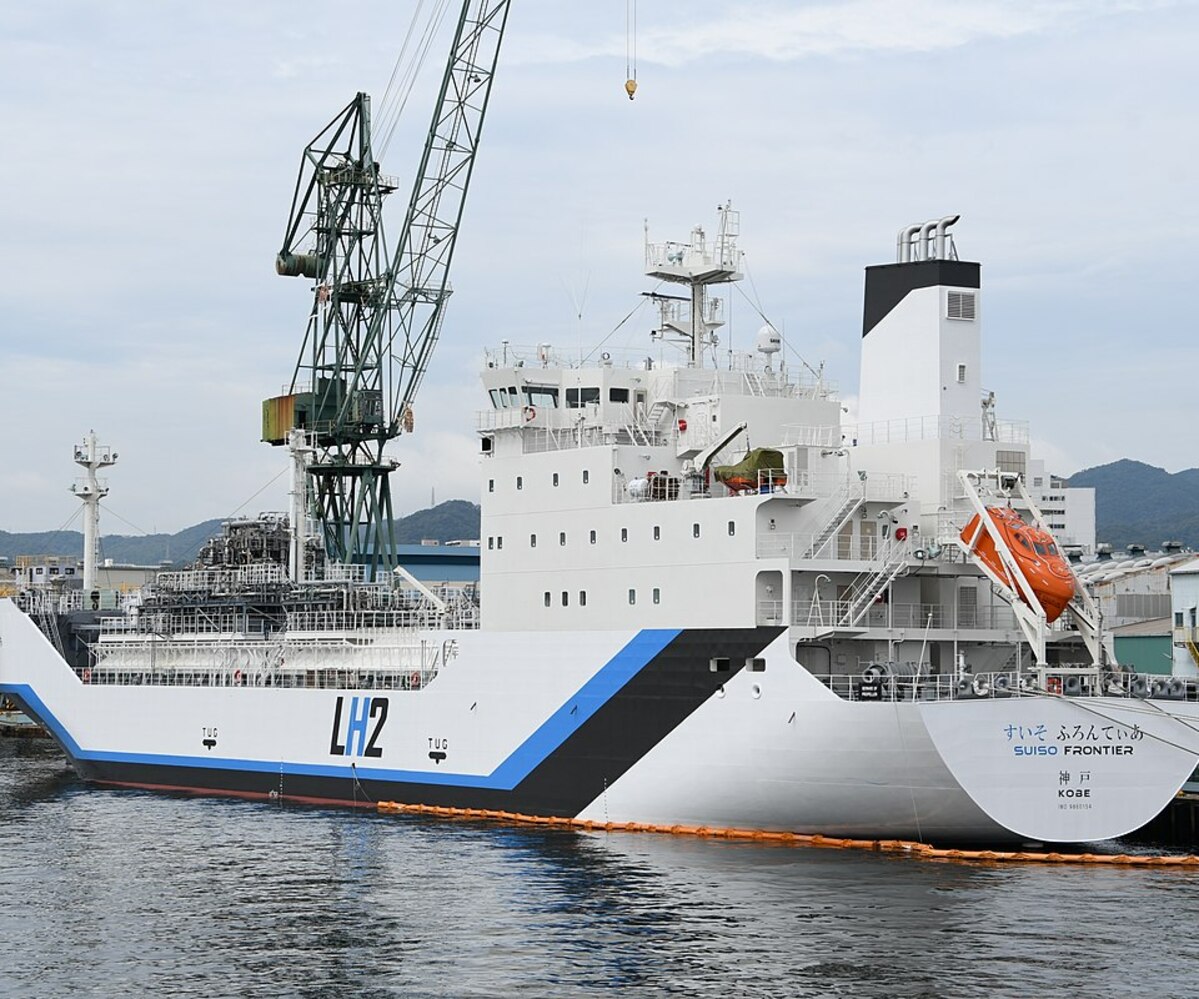The arrival of Kawasaki Heavy Industries' Susio Frontier, the world's first liquid hydrogen transport vessel, from Japan made headlines earlier this month and was hailed as a technological marvel.
However, some commentators have argued producing the hydrogen using coal gasification from AGL Energy's stranded brown coal reserves in the La Trobe valley will make the project a white elephant as the world decarbonises.
Forrest wrote in the Australian Financial Review yesterday that Kawasaki deserved "immense praise" for its achievement in creating the vessel, which keeps the stored hydrogen on board at -250C, and the federal government for backing the project.
"But let's not pretend we're exporting "clean energy" to the world," he wrote.
"Japan's innovations are without doubt a huge leap forward for humankind. But peddling hydrogen made from brown coal - the dirtiest of all coals - as "clean" is a cringe-inducing backwards shuffle into the dark ages.
"Make no mistake - hydrogen itself is indeed a zero-emissions fuel. Using it releases nothing but water as a byproduct. But we look like zero-IQ idiots if we make hydrogen out of the dirtiest fossil fuel on the planet and hawk it as "clean".
The federal government contends that the project helps establish Australia as a hydrogen exporter, as its long-established trading partners in north Asia are looking to the gas as a way to reduce emissions in their own countries.
"The HESC project has the potential to become a major source of clean energy which will help Australia and Japan both reach our goals of net zero emissions by 2050," energy and emissions reduction minister Angus Taylor said earlier this month.

The Susio Frontier
Forrest has focussed his company's decarbonisation strategy almost entirely around green hydrogen, produced using renewable-powered electrolysers that split water into hydrogen and oxygen, arguing it is the only viable method of producing hydrogen in a net-zero carbon world.
"Emissions from brown coal-derived hydrogen are twice that of natural gas-derived hydrogen. Only green hydrogen is zero carbon," he wrote.
He has also gone out of his way to publicly attack oil and gas companies, such as Woodside and Santos, for their own decarbonisation strategies which involve offsets, and CCS.
On that front, he also criticised the CCS aspect of the HESC project - CarbonNet - which sees the emissions captured from the coal gasification process, transported and pumped underground in depleted oil and gas reservoirs in the Bass Strait.
"There is no realistic prospect that carbon capture and storage will sufficiently reduce the emissions of brown hydrogen," he wrote.
"CCS doesn't deal with the sulphur, arsenic and other toxic materials, or with the fugitive emissions of methane from coal mining."
CarbonNet is so far largely an on-paper exercise, with one exploration well drilled in 2019, though the Victorian state government notes that regulatory and environmental assessments will commence "later in 2022."
Expected FID on the CCS aspect of the project is expected in 2024 and it is not set to be operational until 2030. Earlier this month the federal government committed A$20 million to support the next stage of the project.
Forrest pointed to the technical difficulties encountered at Chevron's Gorgon CCS project in north Western Australia, as an example of how CCS "is the single greatest technological flop since Google Glass".
"Chevron's Gorgon stored just 1 million tonnes a year of carbon dioxide - rather than the projected 4 million tonnes a year that approval to build this massive methane emitter was based on."
He argued that Australians should be given a choice between burning coal to create hydrogen, versus creating it via electrolysis using "Australian solar and wind", as a way to plug his own company's technological achievements.
"Last year, our Fortescue Future Industries, made its first electrolyser, green-powered truck, train, and ship engine, and this year will make green hydrogen at home, to start powering it all," Forrest wrote.
However his company's ambitious and somewhat bellicose announcements have been met with scepticism by some analysts who argue their value and expected return, at least at this stage, cannot be quantified.
Meanwhile the HESC project has been praised by former chief scientist Dr Alan Finkel for making use of an otherwise stranded resource, providing local employment and progressing development of a liquefied hydrogen market.
"We are talking about an alternative fuel to natural gas, for generating electricity, transporting and heating," he told Energy News at the Greenhouse Gas Technology conference in 2018.
"Until they scale up they won't know the most cost effective way" to produce or transport it, he said.
The case for the project starts with low cost coal and the building of an economic industry that may earn a good measure of social licence once Victoria's coal-fired power plants shut and new jobs are needed, he explained.
























